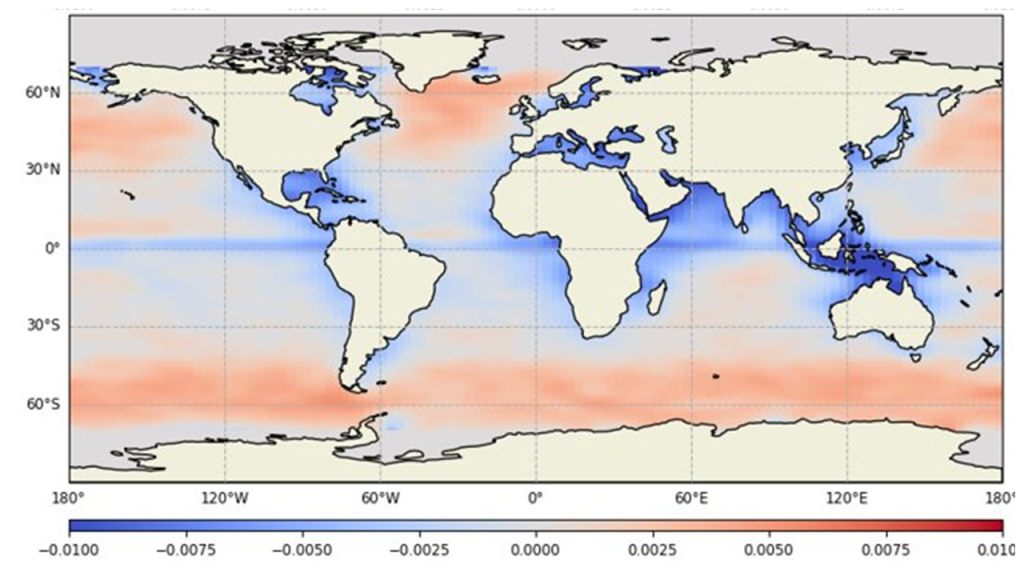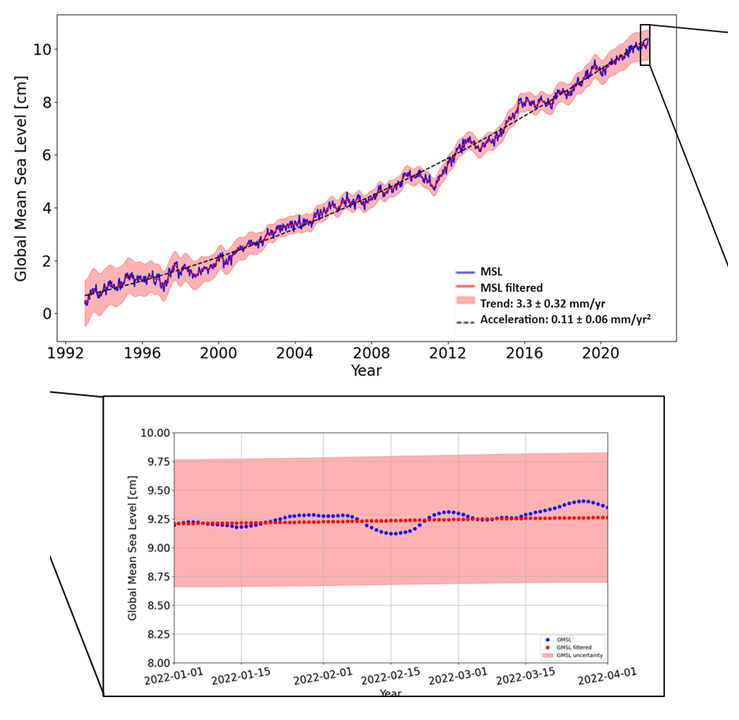Sentinel-6A and Jason-3 interleaved orbit in DUACS processing
In January 2023, a temporal extension of the MY series was delivered. It covers the period from 2022/02/10 to 2022/06/23 and includes different changes in the constellation that are described below in this section.
First, as previously done in NRT processing (see NRT April 2022 and NRT May 2022 versions ), Sentinel-6A was introduced as the new altimeter reference mission and replaced Jason-3.
Sentinel-6A operates in two different modes. In MY production the Low Resolution (LR) mode, based on LRM instrument equivalent to the one used for Jason-3, is used to ensure the continuity of the MSL signal. The resulting noise level of the Sentinel-6A measurement is slightly lower than for the Jason-3 mission, with a mean 1 Hz measurement noise around 2.3 cm RMS (see QUID document).
As previously observed with S6A HR measurement (see NRT April 2022 version), CalVal analysis underscored that the S6A LR measurement shows regional biases compared to the contemporaneous Jason-3 measurement (L2 version FC007). Part of these biases are fully explained and corrected in L2P processing. This solution is in place until corrective changes are implemented in the upstream L2 processing chains (expected with L2 FC008 version). Another part of the biases however still remains to be fully understood. The following figure illustrates these biases observed over the Sentinel-6A/Jason-3 tandem phase. They range between ±0.5 cm. These biases have been managed in the L3 processing step in order to ensure a smooth transition between Jason-3 and Sentinel-6A measurements.

The qualification of the L3 and L4 MY production using Sentinel-6A as reference mission showed good results, with no impact for Mean Sea Level trend continuity. Figure 2 shows the MSL trend estimation over the global ocean. It underscores a perfect continuity of the signal at the transition between Jason-3 and Sentinel-6A used as reference mission (i.e., 2022/02/10). Same result was observed for regional MSL trend estimation over the European area (not shown), and sub millimetric impact was observed in the equatorial band (latitudes comprised within ±5°) and in latitudes < -40°. Comparison with SLA measured by in situ tide gauge (Gloss-Clivar) also shows the continuity of the SLA. The global mean SLA difference between altimetry and tide gauges ranges between ±1 cm over the mid-2021 to mid-2022 period tested (not shown).
Secondly, the orbit change that occurred in May 2022 for Jason-3 (see NRT May 2022 ) was taken into account. Jason-3 measurements on its new interleaved orbit with Sentinel-6A are delivered in the new dataset “j3n”.
